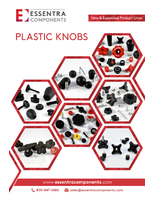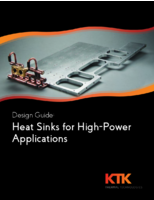Proposed ASTM Standard covers methane hazard mitigation.
Press Release Summary:
Developed by Subcommittee E50.02 on Real Estate Assessment and Management, ASTM WK32621 will enable users to determine whether or not a real estate site has a methane hazard that needs to be mitigated. According to John Sepich, president of Brownfield Subslab and chairman of task group developing ASTM WK32621, proposed standard should allow cost savings where no mitigation is necessary and should address extraordinary mitigation measures where the hazard is severe.
Original Press Release:
Methane Hazard Mitigation is Subject of Proposed ASTM Environmental Assessment Standard
W. CONSHOHOCKEN, Pa., - A proposed new ASTM International standard will enable users to determine whether or not a real estate site has a methane hazard that needs to be mitigated. ASTM WK32621, Practice for Evaluating Potential Hazard Due to Methane in the Vadose Zone, is being developed by Subcommittee E50.02 on Real Estate Assessment and Management, part of ASTM International Committee E50 on Environmental Assessment, Risk Management and Corrective Action.
"Current standards require mitigation at a great number of sites where no hazard exists," says John Sepich, president, Brownfield Subslab, and chairman of the task group developing ASTM WK32621. "In a few cases, current standards for mitigation techniques are inadequate to protect a structure where the hazard is severe. The proposed standard should allow cost savings where no mitigation is necessary and should address extraordinary mitigation measures where the hazard is severe."
Once the proposed standard is approved, it will be used by regulators, developers, sellers, buyers, occupants, management companies, lenders, consultants, contractors and manufacturers.
All interested parties are invited to participate in the development of ASTM WK32621.
"In order for this proposed standard to be meaningful, it is important to involve regulators from a wide geographic range, and from local and state governments," says Sepich. "We would also like more participation from insurance and legal specialists and the consulting and regulatory industry."
Sepich also encourages international participation in the development of ASTM WK32621 since methane is of potential concern throughout the world.
ASTM International welcomes and encourages participation in the development of its standards. For more information on becoming an ASTM member, visit http://www.astm.org/JOIN.
ASTM International is one of the largest international standards development and delivery systems in the world. ASTM International meets the World Trade Organization (WTO) principles for the development of international standards: coherence, consensus, development dimension, effectiveness, impartiality, openness, relevance and transparency. ASTM standards are accepted and used in research and development, product testing, quality systems and commercial transactions.
ASTM Committee E50 Next Meeting: Oct. 31-Nov. 3, 2011, October Committee Week, Tampa, Fla.
Technical Contact: John Sepich, Brownfield Subslab, San Antonio, Texas, Phone: 213-500-0425; jesepich@gmail.com
ASTM Staff Contact: Daniel Smith, Phone: 610-832-9727; dsmith@astm.org
ASTM PR Contact: Barbara Schindler, Phone: 610-832-9603; bschindl@astm.org




